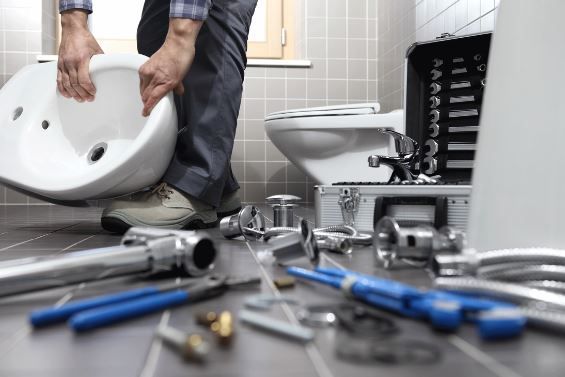Tips on How to Unclog Your Toilet Like a Pro


Clogged toilets can be a homeowner’s nightmare, disrupting daily routines and causing unnecessary stress. Luckily, with the right toilet clog solutions and a bit of know-how, you can tackle this common issue like a pro. In this comprehensive guide, we’ll cover everything from basic unclogging tips to advanced techniques using plumbing tools for homeowners. Let’s dive in!
Understanding Common Clogging Causes
Before we jump into solutions, it’s essential to understand common clogging causes. Knowing what leads to toilet blockages can help you prevent them in the future. Here are some typical culprits:
- Excess Toilet Paper: Using too much toilet paper is one of the most frequent causes of clogs.
- Foreign Objects: Items like toys, feminine hygiene products, or excessive wipes can cause serious blockages.
- Grease and Fat: Flushing grease can lead to buildup over time.
- Low-Flow Toilets: These can struggle to clear waste if not used properly.
Understanding these causes is vital for preventing toilet drainage problems.
Signs of a Clogged Toilet
Being aware of the signs of a clogged toilet can save you from a messy situation. Look out for:
- Frequent Backups: If you notice the toilet frequently backs up, it’s a sign something is amiss.
- Slow Drainage: Water that drains slowly can indicate a developing clog.
- Flushing Issues: If the flush isn’t strong, the toilet may be struggling with a blockage.
- Unpleasant Odors: Foul smells can signal waste buildup.
Step-by-Step Unclogging Guide
Here’s a step-by-step unclogging guide that incorporates various techniques:
Step 1: Gather Your Plumbing Tools for Homeowners
Before you start, ensure you have the right tools. Key items include:
- Plunger: The most essential tool for any homeowner. Ensure you have a flange plunger for toilets.
- Toilet Auger: This specialized tool can reach deeper clogs.
- Natural Drain Cleaners: Safe and eco-friendly solutions can help break down buildup.
- Rubber Gloves: Protect your hands during the process.
Step 2: How to Use a Plunger
How to use a plunger effectively:
- Create a Seal: Place the plunger in the toilet bowl and ensure it covers the hole completely.
- Push and Pull: Use firm, quick thrusts, pushing down and pulling up, to create suction.
- Repeat: Continue for 15-20 seconds. If the water starts to drain, you’ve successfully dislodged the clog.
Step 3: Toilet Auger Techniques
If the plunger doesn’t work, it’s time for the toilet auger:
- Insert the Auger: Carefully feed the auger into the toilet bowl.
- Crank the Handle: Turn the handle clockwise until you feel resistance.
- Break the Clog: Continue cranking to break apart the blockage or hook onto it and pull it out.
Step 4: Natural Drain Cleaners
For a gentle approach, consider natural drain cleaners:
- Baking Soda and Vinegar: Pour one cup of baking soda and one cup of vinegar into the bowl. Let it sit for 30 minutes, then flush with hot water.
- Salt and Hot Water: A cup of salt followed by boiling water can also work wonders.
Emergency Clog Fixes
If you’re facing an emergency, here are a few quick emergency clog fixes:
- Dish Soap: Pour a generous amount into the bowl, wait a few minutes, and then follow with hot water.
- Wet/Dry Vacuum: If you have one, use it to suck out the clog directly (ensure to create a good seal).
Toilet Maintenance Tips
To keep your toilet functioning optimally, follow these toilet maintenance tips:
- Regular Cleaning: Clean your toilet bowl regularly to prevent buildup.
- Limit Flushes: Don’t flush items that can cause clogs.
- Check the Mechanism: Ensure the flapper and other components are working correctly.
Preventing Toilet Clogs
The best strategy is to focus on preventing toilet clogs before they start. Here’s how:
- Educate Family Members: Make sure everyone knows what can and cannot be flushed.
- Use Less Toilet Paper: Encourage using only what is necessary.
- Routine Inspections: Check for signs of wear in your plumbing and replace parts as needed.
When to Call a Plumber
If your DIY efforts fail, it may be time to call a plumber. Signs that you need professional help include:
- Persistent Clogs: If the toilet clogs frequently despite your efforts.
- Multiple Fixtures: If other drains in your home are backing up, you may have a bigger issue.
Unusual Noises: Gurgling or strange sounds from your plumbing could indicate problems.
Frequently Asked Questions(FAQs)
Common causes include excessive toilet paper usage, foreign objects accidentally dropped in, buildup of waste, and low water levels in the tank.
The most common tools are a plunger, a toilet auger (snake), and rubber gloves. Optional tools include a wet/dry vacuum and a bucket.
Ensure there's enough water in the bowl to cover the plunger. Position the plunger over the drain hole, creating a seal. Push down firmly, then pull up quickly to create suction. Repeat several times until the clog clears.
If multiple attempts to unclog the toilet fail, or if you notice recurring clogs, it may be time to call a plumber to inspect for underlying issues.
If the toilet begins to overflow, immediately turn off the water supply (usually a valve behind the toilet). Then, try to unclog it using a plunger once the water level lowers.
Unclogging your toilet doesn’t have to be a daunting task. With these tips and techniques, you can tackle most issues like a pro. From DIY toilet unclogging methods to understanding the tools at your disposal, being prepared can save you time, money, and frustration. Remember, regular maintenance is key to preventing toilet drainage problems in the future. Even if the DIY fails Contact the best plumbers near you for clogged toilet repair.
